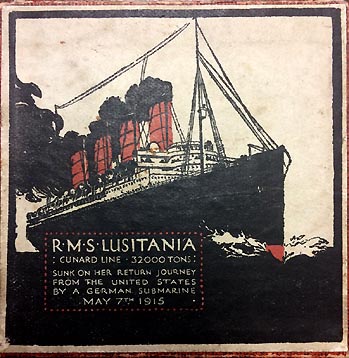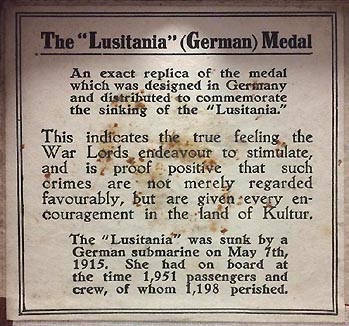|
The German U-20 Commander ordered the Lusitania to be fired upon without first attempting to alert the crew and passengers. The reasoning for this is dispersed among theories that it was smuggling ammunition, that providing prior warning would have put the submarine in danger of being attacked, and because the Commander did not want to let the ship reach British ports. There are conflicting reports that the Lusitania was carrying everything from small arms ammunition to artillery rounds. There was a report of a secondary explosion that was blamed on a second torpedo by the Allies and by ammunition from the Central Powers. The most recent speculation, following a 1993 dive to the wreckage, is that the coal powder in the boiler room ignited and exploded. Some of you may notice the date printed on the medal is incorrect as the Lusitania was actually sunk on May 7, 1915. Karl Goetz eventually struck a new medal with the correct “7 MAI 1915” on it but the damage had already been done. The inconsistency in the dates led many to believe this was premeditated. Japan, Great Britain, and the United States all produced copies of this medal, some with “MAI” but most with “MAY” as the date. These pieces were used as propaganda against Germany. |

Box cover shown above, text shown below.
R·M·S LUSITANIA
:CUNARD LINE · 32000 TONS:
SUNK ON HER RETURN JOURNEY
FROM THE UNITED STATES
BY A GERMAN SUBMARINE
MAY 7TH 1915 |


